Vehicle-Infrastructure Cooperative 3D Object Detection Based on Adaptive Feature Selection
-
摘要: 车路协同场景完成三维目标检测需解决车载端和路侧端之间通信带宽受限和信息聚合能力有限两个问题。该文基于空间过滤理论,设计了自适应特征选择的车路协同3D目标检测方案(AFS-VIC3D)。首先,为解决通信带宽受限问题,在路侧端设计了包含两个基本模块的自适应特征选择方案:(1)图结构特征增强模块(GSFEM)利用图神经网络(GNN)通过交互更新节点和边的权重来增强前景目标区域特征响应,并减少背景区域特征响应,以提升目标区域特征判别性;(2)自适应特征通信掩码构建模块(ACMGM)通过动态分析特征重要性分布,自适应选择信息量高的特征以构建稀疏二维通信掩码图实现特征优化传输;其次,为了提升信息聚合能力,在车载端设计了多尺度特征聚合模块(MSFA),通过空间-通道聚合协同机制,在尺度、空间和通道层次上融合车载端和路侧端特征,提高目标检测精度和鲁棒性。所提AFS-VIC3D在公开数据集DAIR-V2X和V2XSet上进行验证,均以交互比(IoU)阈值分别为0.3/0.5/0.7时平均精度(AP)为指标。在DAIR-V2X数据集上,该方案以$ {2^{20.15}} $字节的通信量达到了83.65%/79.34%/64.45%的检测精度;在V2XSet数据集上,以$ {2^{20.16}} $字节的通信量达到了94.14%/93.08%/86.69%的检测精度。结果表明,所提AFS-VIC3D方案自适应选择并传输对目标检测起关键作用的特征,在降低通信带宽消耗的同时提升3D目标检测性能,能实现检测性能与通信带宽之间的最佳权衡。Abstract:
Objective Vehicle-infrastructure cooperative 3D object detection is recognized as a core technology for intelligent transportation systems as autonomous driving technology continues to evolve. Beyond-line-of-sight perception capabilities are provided to vehicles through the fusion of roadside and vehicle-mounted LiDAR data, demonstrating significant potential for enhanced traffic safety and efficiency. However, traditional vehicle-infrastructure cooperation is challenged by limited communication bandwidth and insufficient heterogeneous data aggregation capabilities, making it difficult for a balance to be achieved between object detection performance and bandwidth resources. The practical application of cooperative technology in complex traffic scenarios is severely constrained by these limitations. To address the above challenges, this paper proposes an adaptive feature selection-based vehicle-infrastructure cooperative 3D object detection scheme (AFS-VIC3D). The framework leverages spatial filtering theory to identify and transmit the most critical features for object detection, thereby enhancing 3D detection performance while simultaneously reducing communication bandwidth consumption. Methods AFS-VIC3D adopts a collaborative design for both roadside and vehicle-mounted terminals. Point cloud inputs are first encoded into BEV features via PointPillar encoders, with metadata synchronization ensuring spatiotemporal alignment. At the roadside terminal, key features are selected through parallel Graph Structure Feature Enhancement Module (GSFEM) and Adaptive Communication Mask Generation Module (ACMGM) branches, while multi-scale features are hierarchically extracted using a ResNet backbone. Element-wise multiplication fuses branch outputs to generate optimized features for transmission. At the vehicle-mounted terminal, BEV features are processed via homogeneous backbones and fused using a Multi-Scale Feature Aggregation (MSFA) module across scale, spatial, and channel dimensions, mitigating sensor heterogeneity and enhancing detection robustness. Results and Discussions The effectiveness and robustness of AFS-VIC3D were validated on both the DAIR-V2X real-world and V2XSet simulation datasets. Comparative experiments ( Table 1 ,Figure 5 ) show that the model achieves higher detection accuracy with lower communication overhead and degrades more gradually under low-bandwidth conditions. Ablation studies (Table 2 ) indicate that each module (GSFEM, ACMGM, MSFA) contributes to performance: GSFEM enhances target feature discriminability, while ACMGM in combination with GSFEM significantly reduces communication cost. Comparison of feature transmission methods (Table 3 ) shows that adaptive sampling based on scene complexity and target density (C-DASFAN) achieves higher accuracy and lower bandwidth, confirming ACMGM’s advantage. BEV visualizations (Figure 6 ) reveal predicted bounding boxes closely match ground truth with low redundancy. Analysis of complex scenarios (Figure 7 ) demonstrates reduced missed detections and false positives, highlighting robustness in high-density and complex road conditions. Feature-level visualization (Figure 8 ) further confirms that GSFEM and ACMGM effectively enhance target features and suppress background noise, improving overall model performance.Conclusions This paper proposes an Adaptive Feature Selection-based Vehicle-Infrastructure Cooperative 3D Object Detection framework (AFS-VIC3D) that addresses core challenges of limited communication bandwidth and heterogeneous data aggregation through collaborative design of roadside dual-branch feature optimization and vehicle-mounted multi-scale feature aggregation. The GSFEM module leverages graph neural networks to enhance target feature discriminability, the ACMGM module achieves communication resource optimization through communication mask generation, and the MSFA module improves heterogeneous data aggregation capabilities between vehicle and infrastructure terminals through collaborative mechanisms of maximum fusion spatial and channel aggregation. Experimental results on public datasets DAIR-V2X and V2XSet demonstrate that AFS-VIC3D significantly improves 3D object detection accuracy while reducing communication overhead, with particularly notable detection performance advantages in complex scenarios. This framework provides an innovative solution for practical applications of vehicle-infrastructure cooperative 3D detection technology, demonstrating significant application potential in bandwidth-constrained scenarios of intelligent transportation systems. -
表 1 DAIR-V2X和V2XSet数据集上各算法对比实验结果
方法 阶段 DAIR-V2X V2XSet AP@0.3↑ AP@0.5↑ AP@0.7↑ Comm↓ AP@0.3↑ AP@0.5↑ AP@0.7↑ Comm↓ No Collaboration N 64.06 61.05 51.83 0 79.63 77.33 51.34 0 Early Fusion E 79.61 74.45 58.82 27.48 90.20 84.60 54.82 28.01 Late Fusion L 78.55 69.72 44.04 8.39 87.62 80.87 50.39 8.57 F-Cooper[7] Ⅰ 79.38 72.00 54.40 24.62 86.61 79.00 52.68 24.87 V2VNet[8] Ⅰ 79.70 72.19 54.04 24.62 90.70 85.43 61.40 24.87 V2X-ViT[9] Ⅰ 79.60 71.61 53.26 24.62 91.65 87.36 66.65 24.87 When2com[10] Ⅰ 79.08 71.84 54.43 24.62 84.16 79.55 56.12 24.87 Where2comm[11] Ⅰ 80.41 74.93 57.03 23.06 92.04 88.87 68.82 23.08 How2comm[12] Ⅰ 80.98 76.05 59.45 22.85 90.10 90.28 73.87 22.86 SCOPE[25] Ⅰ 81.88 78.52 63.29 24.88 91.64 91.27 82.19 24.88 CoAlign[16] Ⅰ 81.60 77.45 63.85 24.25 92.79 91.69 83.12 24.25 Fusion2comm[13] Ⅰ — 71.24 56.72 21.04 — — — — SparseComm[14] Ⅰ — — — — — 91.82 77.60 20.35 本文方法 Ⅰ 83.65↑ 79.34↑ 64.45↑ 20.15↓ 94.14 ↑ 93.08↑ 86.69↑ 20.16↓ 表 2 DAIR-V2X和V2XSet数据集下的消融实验结果
Modules DAIR-V2X V2XSet GSFEM ACMGM MSFA AP@0.3↑ AP@0.5↑ AP@0.7↑ Comm↓ AP@0.3↑ AP@0.5↑ AP@0.7↑ Comm↓ × × × 80.41 74.93 57.03 23.06 92.04 88.87 68.82 23.08 √ × × 80.95 76.01 59.20 24.16 93.00 89.88 72.45 24.18 × √ × 81.92 77.15 62.86 21.15 93.30 90.04 71.72 21.16 × × √ 81.96 77.27 61.34 23.06 92.80 91.10 80.22 23.08 √ √ × 83.20 78.55 63.32 20.15 93.28 92.21 84.85 20.16 √ × √ 81.70 77.27 62.75 24.16 93.24 90.03 72.03 24.16 × √ √ 82.17 77.48 62.00 21.15 94.02 92.79 84.56 21.16 √ √ √ 83.65 79.34 64.45 20.15 94.14 93.08 86.69 20.16 表 3 不同特征选择方式对通信量以及目标检测性能的影响
采用方法 特征选
择方法DAIR-V2X V2XSet AP@0.3↑ AP@0.5↑ AP@0.7↑ Comm↓ AP@0.3↑ AP@0.5↑ AP@0.7↑ Comm↓ 基线 SF 80.41 74.93 57.03 23.06 92.04 88.87 68.82 23.08 方法(1) FC 79.32 71.38 54.59 24.06 88.76 85.46 67.46 24.50 方法(2) FC 78.59 70.63 56.46 22.70 87.25 84.35 66.82 22.80 方法(3) SF 80.56 76.46 57.45 22.60 91.56 88.06 69.63 22.62 方法(4) SF 81.05 76.16 58.49 21.60 92.51 88.74 69.13 21.80 方法(5) SF 80.86 77.02 59.46 20.70 93.01 88.76 70.52 20.80 方法(6) SF 81.92 77.15 62.86 20.15 93.30 90.04 71.72 20.16 -
[1] SHAO Shilin, ZHOU Yang, LI Zhenglin, et al. Frustum PointVoxel-RCNN: A high-performance framework for accurate 3D object detection in point clouds and images[C]. Proceedings of the 2024 4th International Conference on Computer, Control and Robotics (ICCCR), Shanghai, China, 2024: 56–60. doi: 10.1109/ICCCR61138.2024.10585339. [2] 邵凯, 吴广, 梁燕, 等. 基于局部特征编解码的自动驾驶3D目标检测[J]. 系统工程与电子技术, 2025, 47(10): 3168–3178. doi: 10.12305/j.issn.1001-506X.2025.10.05.SHAO Kai, WU Guang, LIANG Yan, et al. Local feature encode-decoding based 3D target detection of autonomous driving[J]. Systems Engineering and Electronics, 2025, 47(10): 3168–3178. doi: 10.12305/j.issn.1001-506X.2025.10.05. [3] ZHANG Yezheng, FAN Zhijie, HOU Jiawei, et al. Incentivizing point cloud-based accurate cooperative perception for connected vehicles[J]. IEEE Transactions on Vehicular Technology, 2025, 74(4): 5637–5648. doi: 10.1109/TVT.2024.3519626. [4] HU Senkang, FANG Zhengru, DENG Yiqin, et al. Collaborative perception for connected and autonomous driving: Challenges, possible solutions and opportunities[J]. IEEE Wireless Communications, 2025, 32(5): 228–234. doi: 10.1109/MWC.002.2400348. [5] LI Jing, NIU Yong, WU Hao, et al. Effective joint scheduling and power allocation for URLLC-oriented V2I communications[J]. IEEE Transactions on Vehicular Technology, 2024, 73(8): 11694–11705. doi: 10.1109/TVT.2024.3381924. [6] LIU Gang, HU Jiewen, MA Zheng, et al. Joint optimization of communication latency and platoon control based on uplink RSMA for future V2X networks[J]. IEEE Transactions on Vehicular Technology, 2025, 74(9): 13458–13470. doi: 10.1109/TVT.2025.3560709. [7] CHEN Qi, MA Xu, TANG Sihai, et al. F-cooper: Feature based cooperative perception for autonomous vehicle edge computing system using 3D point clouds[C]. Proceedings of the 4th ACM/IEEE Symposium on Edge Computing, Arlington, USA, 2019: 88–100. doi: 10.1145/3318216.3363300. [8] WANG T H, MANIVASAGAM S, LIANG Ming, et al. V2VNet: Vehicle-to-vehicle communication for joint perception and prediction[C]. Proceedings of the 16th European Conference on Computer Vision, Glasgow, UK, 2020: 605–621. doi: 10.1007/978-3-030-58536-5_36. [9] XU Runsheng, XIANG Hao, TU Zhengzhong, et al. V2X-ViT: Vehicle-to-everything cooperative perception with vision transformer[C]. Proceedings of the 17th European Conference on Computer Vision, Tel Aviv, Israel, 2022: 107–124. doi: 10.1007/978-3-031-19842-7_7. [10] LIU Y C, TIAN Junjiao, GLASER N, et al. When2com: Multi-agent perception via communication graph grouping[C]. Proceedings of the 2020 IEEE/CVF Conference on Computer Vision and Pattern Recognition (CVPR), Seattle, USA, 2020: 4105–4114. doi: 10.1109/CVPR42600.2020.00416. [11] HU Yue, FANG Shaoheng, LEI Zixing, et al. Where2comm: Communication-efficient collaborative perception via spatial confidence maps[C]. Proceedings of the 36th International Conference on Neural Information Processing System, New Orleans, USA, 2022: 352. doi: 10.5555/3600270.3600622. [12] YANG Dingkang, YANG Kun, WANG Yuzheng, et al. How2comm: Communication-efficient and collaboration-pragmatic multi-agent perception[J]. Proceedings of the 37th International Conference on Neural Information Processing Systems, New Orleans, USA, 2023: 1093. [13] CHU Huazhen, LIU Haizhuang, ZHUO Junbao, et al. Occlusion-guided multi-modal fusion for vehicle-infrastructure cooperative 3D object detection[J]. Pattern Recognition, 2025, 157: 110939. doi: 10.1016/j.patcog.2024.110939. [14] LIU Haizhuang, CHU Huazhen, ZHUO Junbao, et al. SparseComm: An efficient sparse communication framework for vehicle-infrastructure cooperative 3D detection[J]. Pattern Recognition, 2025, 158: 110961. doi: 10.1016/j.patcog.2024.110961. [15] YANG Kun, YANG Dingkang, ZHANG Jingyu, et al. Spatio-temporal domain awareness for multi-agent collaborative perception[C]. Proceedings of the IEEE/CVF International Conference on Computer Vision, Paris, France, 2023: 23383–23392. doi: 10.1109/ICCV51070.2023.02137. [16] LU Yifan, LI Quanhao, LIU Baoan, et al. Robust collaborative 3D object detection in presence of pose errors[C]. Proceedings of the 2023 IEEE International Conference on Robotics and Automation (ICRA), London, UK, 2023: 4812–4818. doi: 10.1109/ICRA48891.2023.10160546. [17] LANG A H, VORA S, CAESAR H, et al. PointPillars: Fast encoders for object detection from point clouds[C]. Proceedings of the 2019 IEEE/CVF Conference on Computer Vision and Pattern Recognition (CVPR), Long Beach, USA, 2019: 12689–12697. doi: 10.1109/CVPR.2019.01298. [18] HE Kaiming, ZHANG Xiangyu, REN Shaoqing, et al. Deep residual learning for image recognition[C]. Proceedings of the IEEE Conference on Computer Vision and Pattern Recognition (CVPR), Las Vegas, USA, 2016: 770–778. doi: 10.1109/CVPR.2016.90. [19] XUE Yuanliang, JIN Guodong, SHEN Tao, et al. SmallTrack: Wavelet pooling and graph enhanced classification for UAV small object tracking[J]. IEEE Transactions on Geoscience and Remote Sensing, 2023, 61: 5618815. doi: 10.1109/TGRS.2023.3305728. [20] ZHANG Jingyu, YANG Kun, WANG Yilei, et al. ERMVP: Communication-efficient and collaboration-robust multi-vehicle perception in challenging environments[C]. Proceedings of the 2024 IEEE/CVF Conference on Computer Vision and Pattern Recognition (CVPR), Seattle, USA, 2024: 12575–12584. doi: 10.1109/CVPR52733.2024.01195. [21] 陶新民, 李俊轩, 郭心悦, 等. 基于超球体密度聚类的自适应不均衡数据过采样算法[J]. 电子与信息学报, 2025, 47(7): 2347–2360. doi: 10.11999/JEIT241037.TAO Xinmin, LI Junxuan, GUO Xinyue, et al. Density clustering hypersphere-based self-adaptively oversampling algorithm for imbalanced datasets[J]. Journal of Electronics & Information Technology, 2025, 47(7): 2347–2360. doi: 10.11999/JEIT241037. [22] LIU Haisong, TENG Yao, LU Tao, et al. SparseBEV: High-performance sparse 3D object detection from multi-camera videos[C]. Proceedings of the 2023 IEEE/CVF International Conference on Computer Vision (ICCV), Paris, France, 2023: 18534–18544. doi: 10.1109/ICCV51070.2023.01703. [23] LIU Mushui, DAN Jun, LU Ziqian, et al. CM-UNet: Hybrid CNN-mamba UNet for remote sensing image semantic segmentation[J]. arXiv preprint arXiv: 2405.10530, 2024. doi. org/10.48550/arXiv. 2405.10530. (查阅网上资料, 不确定本条文献的格式和类型, 请确认) [24] YU Haibao, LUO Yizhen, SHU Mao, et al. DAIR-V2X: A large-scale dataset for vehicle-infrastructure cooperative 3D object detection[C]. Proceedings of the 2022 IEEE/CVF Conference on Computer Vision and Pattern Recognition (CVPR), New Orleans, USA, 2022: 21329–21338. doi: 10.1109/CVPR52688.2022.02067. -





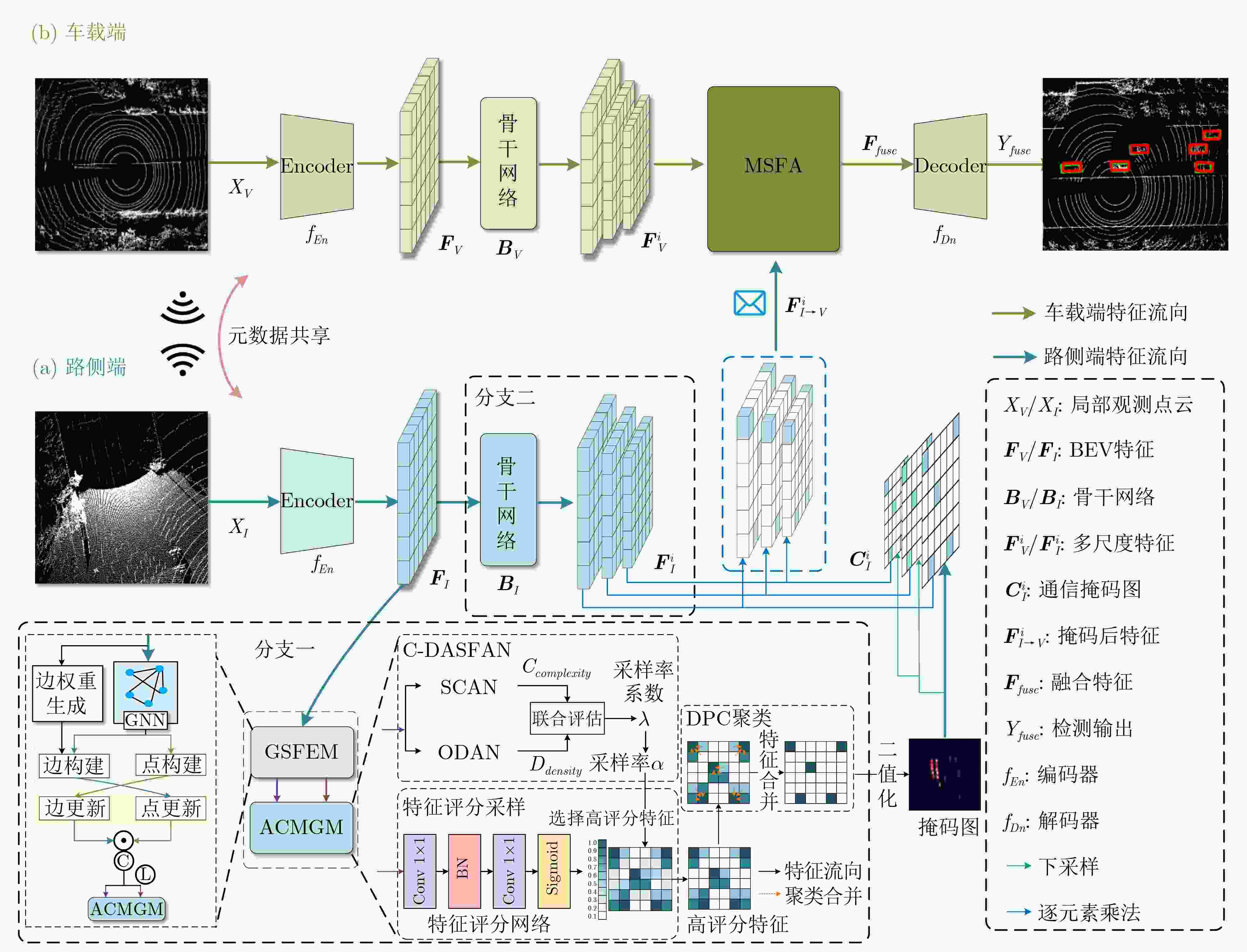
 下载:
下载:
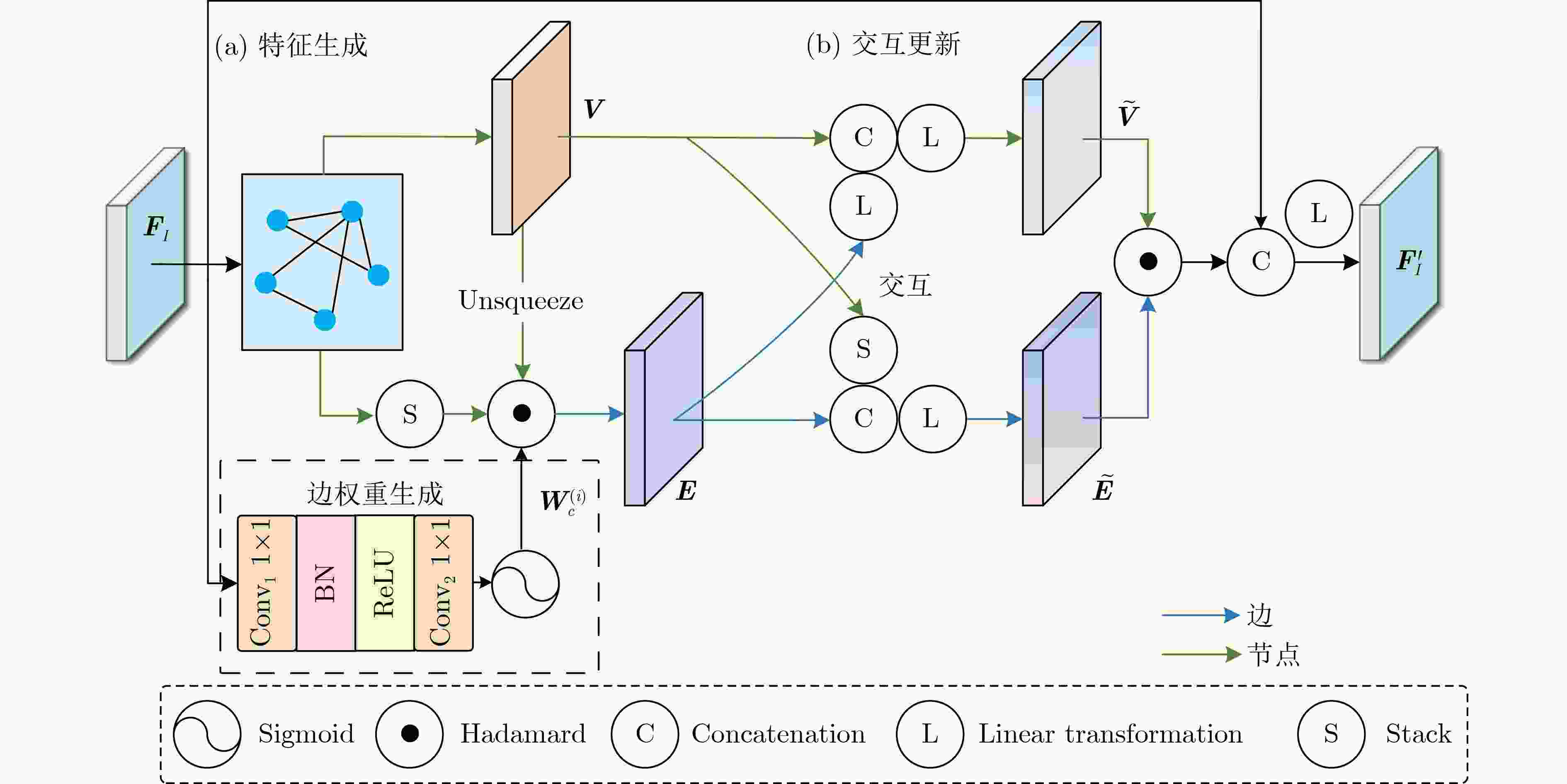


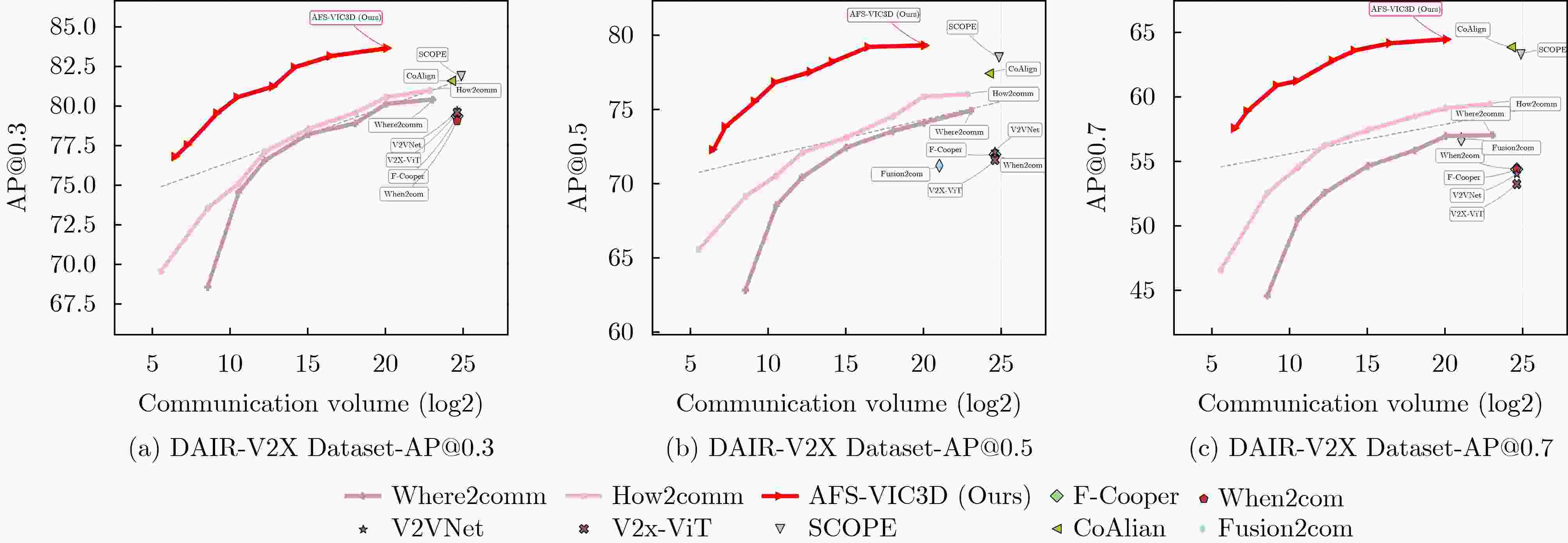
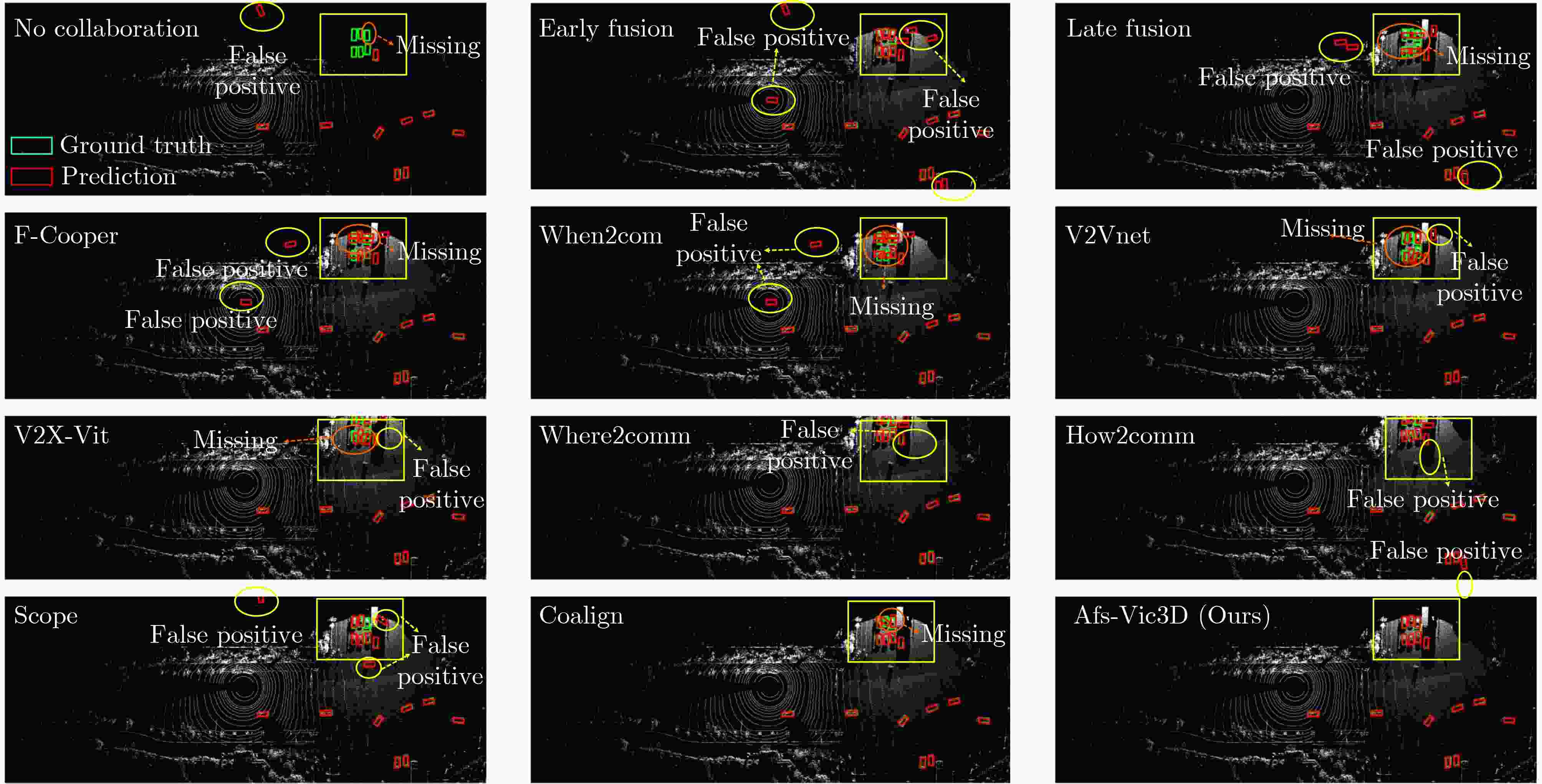

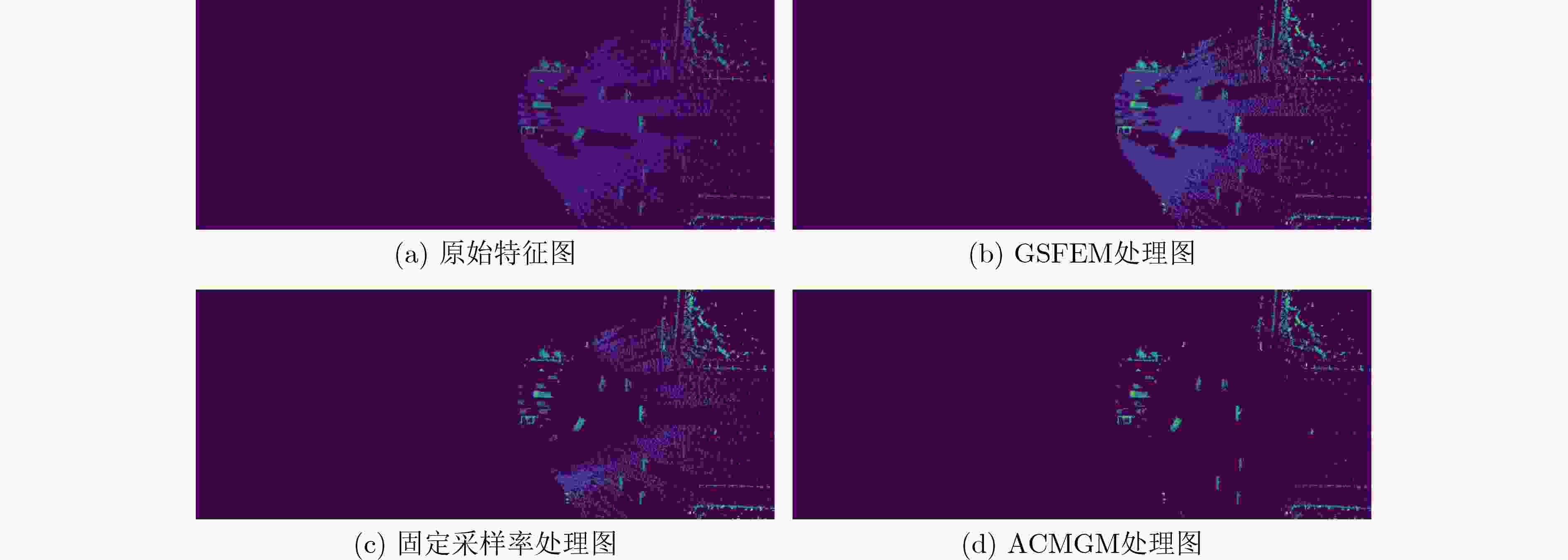


 下载:
下载:
